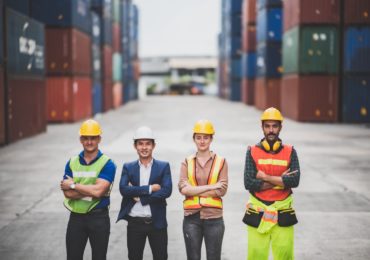Read Time: 4 min.
The shipping industry is notorious for its lack of transparency. Nowhere has this been as glaringly evident as it was in the wake of the 2017 Hanjin collapse – a massive failure of one of the world’s largest shipping companies. Fueled by the worldwide economic downturn, reduced freight rates, and mounting debt, the company went bankrupt and applied for court protection.
When creditors refused to float their line of credit, they were unable to purchase fuel. Word spread in the industry, and some ports denied them the right to dock. Docked ships were issued warrants, and it sent a ripple effect through the industry.
Alliances had been made with many shippers and freight forwarders, who, in the end, got caught in the fallout. Had there been transparency between the carrier, brokers, and forwarders they worked with, much of the damage could have been averted.
>>Inspect Your Freight Before Signing Off: Tips and Best Practices
Freight Alliances: Pros and Cons
Freight alliances are made to provide all parties with cost benefits, route optimization, and various operational efficiencies. However, when there is no transparency or accountability, there is a genuine risk of price-fixing, slot sharing, and a huge potential for disaster, as we witnessed with Hanjin.
Though price collusion is a situation closely watched by regulatory bodies in all countries, it still happens. Without real-time visibility into your freight, you won’t know where it is, when it’s expected to arrive, and what vessel it is on.
When there is no accountability, carriers are free to share space on multiple vessels, underscoring an increased risk of lost shipments, delays, and customer dissatisfaction.
How To Pandemic-Proof Your Supply Chain

The Shipping Industry Today: Still at Risk
In the four years since the Hanjin fiasco, much has changed, but arguably not for the better. Shippers and carriers alike face fresh chicanes at every turn. Tariffs, trade wars, and the global COVID-19 pandemic have altered how we do everything, including how we approach our alliances.
Costs are rising, demand is high, but volumes are down overall, creating a volatile situation for every player in the supply chain. More companies will fail, although probably not on as grand a scale as Hanjin. The organizations that thrive will prioritize transparency in all processes, leveraging supply chain technology, sensors, software, and automation to ensure complete visibility into all operations.
When choosing a freight forwarder to support your business growth, you are entering into a partnership, one that should align with your values and vision in every way.
Transparent processes benefit the shipper by improving visibility on rates and surcharges. It also provides all stakeholders with the ability to track a shipment in real-time, assuring that timelines are accurate and the cargo arrives as expected. Many carriers are ahead of the curve on this, so the onus falls to the forwarder or broker to connect the dots. Ideally, all systems are connected and accessible, so any foreseeable issues can be averted immediately.
In conclusion, though the shipping industry continues to face significant barriers to providing cost-effective and efficient services, supply chain visibility goes a long way to providing the kind of transparency shippers and forwarders need to thrive.
>>>How to Minimize Airfreight Costs with a Good Logistics Ally
If you would like to learn more about DTS World Cargo and our commitment to transparency, reach out today, and let’s talk about it.




